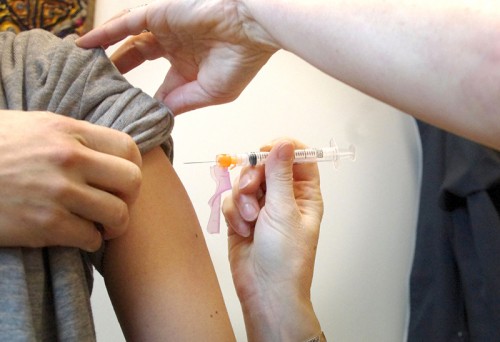HPV Vaccination – Is It ‘Really’ Necessary?
What’s this HPV thing they want to do to my kid? Isn’t this just about sex diseases? Why would I want to give my girl (or boy) that? She’s too young to even date?!
Perhaps, you’re one of the many who think the information is so confusing that you’ll just ignore it until the recommendations get more clear and convincing.
Human Papilloma Virus vaccination for both boys and girls
Frankly, the HPV (Human Papilloma Virus) vaccination roll-out seemed a bit bizarre to me as well. Perhaps some other crisis was taking center stage at the same time or something but it just didn’t seem to have clear benefits so until recently hasn’t gotten much “traction” with parents and well-child-care.
Let me see if I can make things a little more simple and put this issue in perspective; because, yes it is about genitally transmitted viruses (not just sexually) but it’s ubiquitous (not just “naughty”) and once your child becomes sexually active it possibly is too late. Let me explain.
Human Papilloma Virus
The HPV is linked to genital cancer in both males and females – Anal and oropharyngeal cancer in both males and females; cervical, vulvar and vaginal cancer in females; and penile cancer in males.
In a nutshell: just about everybody contracts HPV but fights it off naturally; a significant percent however dont; there’s no way to tell who won’t; vaccination does a great job in preventing it; but, it must be taken before any “genital exploration” to work. And, it’s a series of three, quite expensive, shots.
Old codgers, we just got to take our chances wishing the shot had been invented when we were young; the young folks, they’ve still got a chance to avoid the roll of the dice for the cancer.
Now the details:
There are about 40 types of HPV that affect the genital area and 14 million new HPV infections in the US each year – 50% in 15- 24-year-olds. Over 21 thousand new cases of cervical cancer each year.
In fact, HPV is so common that most people get it at some time in their lives, most often without symptoms. It mostly goes away on its own but if it doesn’t, over time, it can cause cancer. There’s no way to predict who will or won’t clear the virus. That means that people can get and pass on the virus without knowing it and there’s no way of screening males for it.
For most males and females HPV is transmitted during their first 2 to 3 years of sexual contact; however, exposure can happen with any kind of adolescent experimentation that involves genital contact – intercourse isn’t necessary.
Vaccination is given before genital experimentation or sexual activity is initiated so as to prevent HPV contraction and/or assist early resolution thereby avoiding prolonged carrier states.
HPV Vaccination Benefits
There are three HPV vaccines currently available [2015]: HPV2 (approved 2009); HPV4 (2006) and HPV9 (2014) – the company has chosen to price HPV9 so expensively that many can’t afford it, about $150 for those who don’t qualify for government programs.
All three vaccines provide cancer protection against HPV types 16 and 18 which cause most (about 65%) of all HPV cancers in men and women and are blamed for 21,300 cases of cancer every year.
Both the HPV4 and HPV9 vaccines also add protection against HPV types 6 and 11 – the types which cause 90% of all anogenital warts.
The HPV9 adds five more strains: 31, 33, 45, 52 and 58 which protects against an additional 10% of cancers; and, is obviously more expensive. Most of the added protection from using HPV9 instead of HPV4 is against female cancers.
For males, HPV9 provides only 4% additional cancer protection. For females, the additional strains cause 14% of HPV cancers overall, including 15% of cervical cancers and 25% of cervical precancers.
HPV Vaccination Schedule
I’m sure you already realize that vaccinations are one of the most analyzed and “guidelined” topic in all of medicine. Nearly every official medical body scrutinizes literature from all over the world and comes up with their “official” recommendations.
Fortunately, we’re talking about science here and not personal preference or hysteria; so, data is data and usually these entities choose merely to add their endorsement to the guidelines made by CDC or agencies such as ACIP (Advisory Committee on Immunization Practices).
Here is what the latest cancer data supports according the the ACIP (published in the March 27, 2015, Morbidity and Mortality Weekly Report)
- Three HPV vaccine doses are recommended routinely starting at age 11 or 12 years, but vaccination can begin as early as age 9.
- HPV vaccination is recommended through age 26 years for all females and through age 21 years for all males.
- Vaccination through age 26 years is also recommended for immunocompromised males, including those with HIV, and for men who have sex with men.
- HPV9 is one of three HPV vaccines that can be used for routine vaccination:
- HPV2 is licensed only for females.
- HPV4 and HPV9 are licensed for both males and females.
- Three doses of vaccine are needed. Any of the three vaccines can be used to start, continue, or complete the series for females. Either HPV4 or HPV9 should be used to start, complete, or continue the series in males.
–0–
Finally, just to gild the lily a bit, here is a link to a physician’s YouTube video about the subject of HPV vaccinations. The subject seems to stir him up just a bit. HPV Vaccinations [You can click to SKIP the mandatorily inflicted advertisement]



